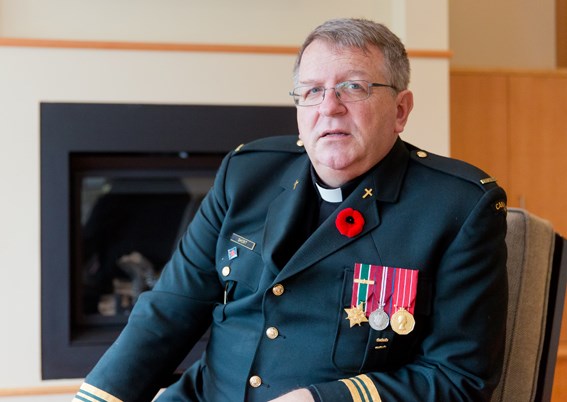Nov. 11 means different things to people. It’s a long weekend and a day off. It’s a parade and we love the pipes and drums and to see the legions of young people from various organizations.
Coordinating the logistics of speakers, wreaths, sounds, songs, poems, the flyover and getting everyone gathered around Memorial Park is a challenge. It’s a time we want to see our leaders and so woe betide the politician who is not present.
Nov. 11 is a significant source of revenue for the Royal Canadian Legion’s Poppy Fund which supports many good causes.
Nov. 11 is not without its controversies – those who wear red poppies for remembrance decry those who choose to wear white poppies for peace. When we create conflict around an individual’s right to express what they believe in, I am afraid we are forgetting the fear of dictatorship and fascism which took Canada to war in 1939.
Some will say Nov. 11 steers too closely towards celebrating war, nationalism, Canada’s martial spirit and its military victories. It is not accurate, though, to refer to what is rightly called a “cenotaph” as a war memorial. To focus us on what Nov. 11 is about we need to go back to its origins.
On the 11th hour of the 11th day of the 11th month in 1918, the violence and death of the “war to end all wars” technically ended. In the initial celebrations of victory and the relief of peace, the families and friends of the 60,000 Canadian military people killed or missing in action were left with their grief and loss.
Since human remains were not returned to Canadian families and many had simply been pulverized into nothing in the first industrial-scale war, there were no graves in Canada for those who loved the war dead to visit. Across Canada there was a movement to create places for those grieving families to gather for the funeral service they never had.
Hence in Memorial Park our marker is properly called a “cenotaph” – an empty tomb – a symbolic place of internment.
The Delta Memorial Park Association was formed to raise funds. Four acres appropriately named Memorial Park were purchased from the estate of William Ladner. The cenotaph was unveiled in 1921 by H. N. Rich whose son Sidney (dead in the Ypres Salient) was one of the 27 young men from Delta who did not come home from war.
We can only imagine in those early years on Nov. 11 the broken-hearted who found solace and peace in such a beautiful and solemn place. I know some of that feeling as a Canadian Forces veteran having been both to war and in combat.
For me, Remembrance Day narrows down to the last post, the silence, the piper’s lament, the rouse where each year my heart again is broken as I remember those I knew who died or were injured in mind and body over my 26 years of military service.
Whether a veteran of the Second World War or the recent conflicts in the former Yugoslavia or Afghanistan, we who have seen war will never forget those who bled and died alongside us.
I share this with all of you so that when Nov. 11 comes and wherever you pause or gather at 11 a.m. that you might remember what the real purpose of this day is. In the words of the poet Laurence Binyon: “They shall grow not old, as we that are left grow old: Age shall not weary them, nor the years condemn. At the going down of the sun and in the morning, we will remember them.”
Rev. Jim Short is the minister at Ladner United Church.



